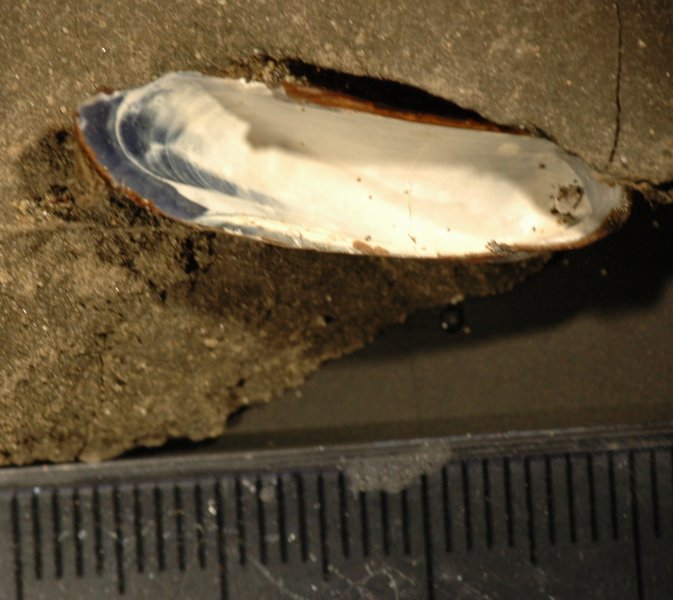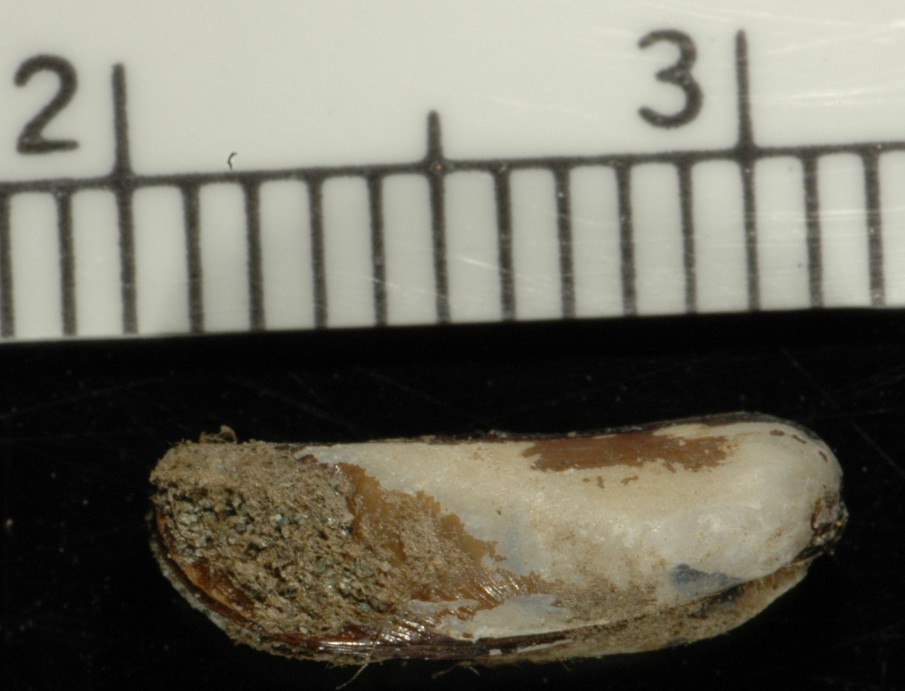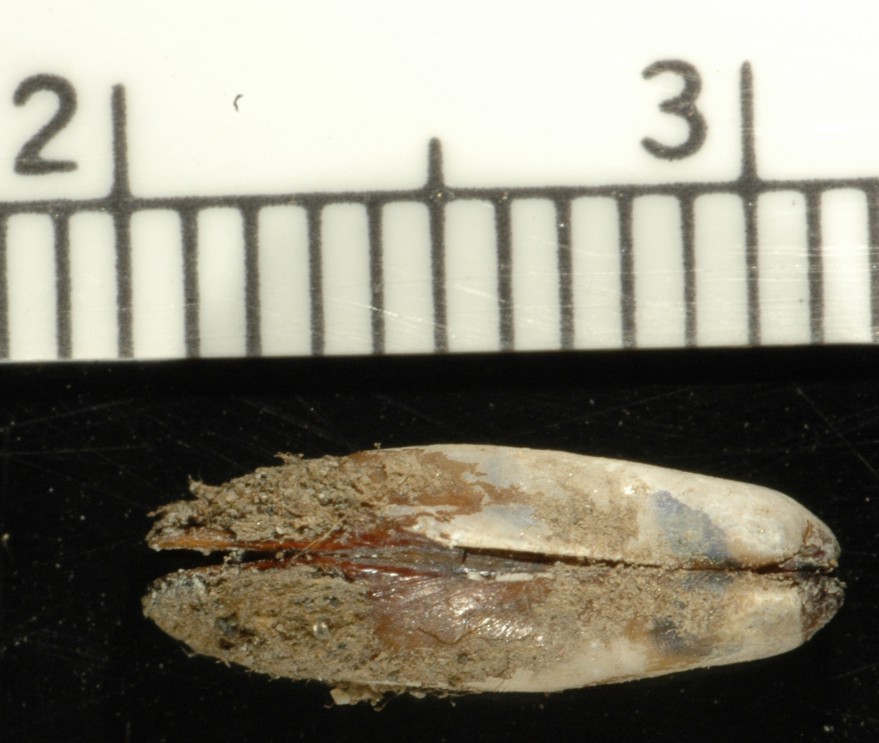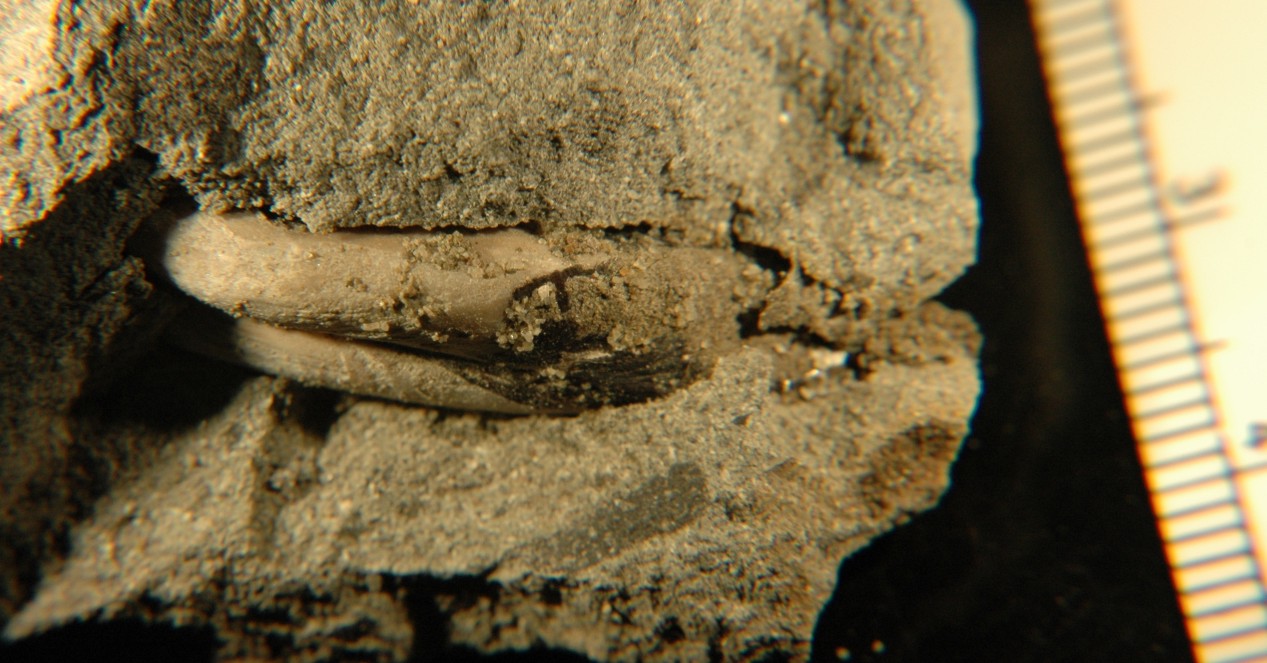Adula californiensis (Philippi, 1847)Common name(s): California datemussel, California pea-pod borer, pea pod borer |
|
| Synonyms: Betula californiensis |  |
| Phylum Mollusca
Class Bivalvia Order Mytiloida Family Mytilidae |
|
| Adula californiensis from Kalaloch, WA. Burrowing into shale. Scale = mm | |
| (Photo by: Dave Cowles, July 2005) | |
How to Distinguish from Similar Species:A. diegensis does not taper at the posterior end and attaches to rocks or pilings. A. falcata has filelike vertical striations and is not usually found north of Oregon. Lithophaga plumula has chalky encrustaceans on the posterodorsal slopes of valves, bores in limestones, and is not usually found N of California.
Geographical Range: Queen Charlotte Islands, BC, Canada to San Diego, CA
Depth Range: Intertidal to 20 m
Habitat: Boring in shale and soft rock
Biology/Natural History: Although the valves are smooth, these mussels bore mechanically in shale or soft rock with the valves. Occasionally they can be found on the surface of a rock or attached to other mussels. The bivalve Petricola carditoides may nestle in old holes made by this species. In oregon, females produce eggs from June to October. Larvae are planktonic for about 3 days.
| Return to: | |||
| Main Page | Alphabetic Index | Systematic Index | Glossary |
References:
Dichotomous Keys:Kozloff 1987, 1996
Smith and Carlton, 1975
General References:
Harbo,
1997
Kozloff,
1993
Morris,
1966
Morris
et al., 1980
Sept,
1999
Scientific Articles:
Web sites:
This site by Atsushi Chiyoda discusses the biology and fossil record of boring bivalves in Japan.
General Notes and Observations: Locations, abundances, unusual behaviors:
Most of the individuals of this species that I have encountered have been very small--on the order of 1 cm or less long. Often they burrow so deeply in the rock that they cannot be seen without breaking the rock apart.

The inside of this mussel is a pearly blue-white or blue-gray.

This small individual was boring into soft sandstone at Toleak Point,
WA (on the open coast). Scale is millimeters, with
centimeters marked.

A dorsal view of the same individual. The dorsal margin of
the
shell appears slightly inflated in most individuals.

Here is an individual, also from Toleak Point, in situ inside a
rock.
Note how the dorsal margin (facing the camera) appears inflated beyond
the hinge (which is hidden between the inflated valves)
Authors and Editors of Page:
Dave Cowles (2005): Created original page